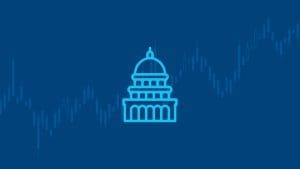The Federal Reserve delivered its third consecutive interest rate cut on Wednesday, capping the year with a cumulative full percentage point reduction since its initial half-point cut in September.
The latest 25-basis-point cut brings the benchmark federal funds rate to a range of 4.25%-4.50%. This rate, which banks charge each other for overnight lending, has broad implications for consumer borrowing costs, influencing everything from mortgage rates to credit card charges and auto loans.
Markets had largely anticipated this move, with prediction markets showing strong conviction in the outcome.
Kalshi, a federally regulated prediction platform, saw its $6.4M December Fed decision market pricing in a 25-basis-point cut with over 80% probability since Dec. 7. The odds rose to above 90% on Dec. 11, ultimately reaching 97% just hours before the announcement.
The platform is already facilitating trades on the Fed’s January 2024 meeting outcome, with no cut at 90% probability.
In its press release, the Federal Open Market Committee (FOMC) stated that “the risks to achieving its employment and inflation goals are roughly in balance,” suggesting a measured outlook on economic conditions.
The statement acknowledged recent labor market dynamics, noting that while the unemployment rate has edged higher, it “remains low.” November’s nonfarm payroll report showed robust job creation, with 227,000 new positions added, slightly exceeding October’s figures.
The Committee reaffirmed its commitment to maintaining inflation at 2 percent over the long run while noting that the Personal Consumption Expenditures (PCE) index rose to 2.3% last month, up 20 basis points from October.
The voting members unanimously voted to lower the interest rate, with Beth Hammack, the president of the Cleveland Fed, expressing her preference to maintain the current rate level.
Pace for future cuts
In their September quarterly projections, the FOMC members anticipated a total rate reduction of another full percentage point, putting the Federal Funds Rate at around 3.25% by the end of 2025.
However, the actual reduction rate and size remain increasingly uncertain. The inflation rate continues to float above the Fed’s 2% target, the stock market soaring after the victory of President-elect Donald Trump, and Trump’s potential inflationary policies on tariff, tax, and immigration policies could sway the Fed’s decision in an unpredictable way under a new administration.
Chairman Jerome Powell’s press conference, scheduled for 2:30 PM EST, is expected to provide further insights into the Fed’s economic outlook and monetary policy trajectory.

























